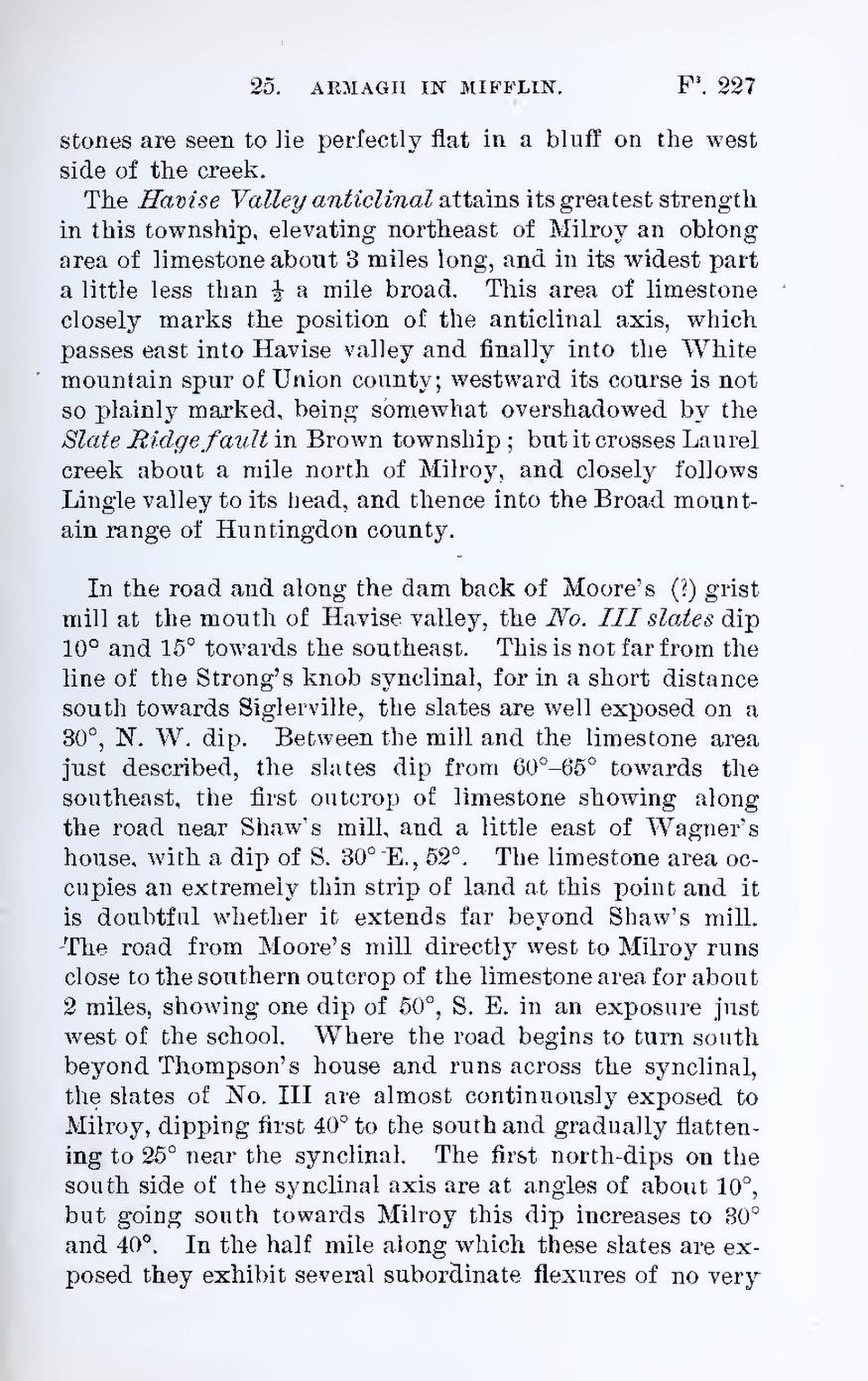stones are seen to lie perfectly flat in a bluff on the west side of the creek.
The Havise Valley anticlinal attains its greatest strength in this township, elevating northeast of Milroy an oblong area of limestone about 3 miles long, and in its widest part a little less than ½ a mile broad. This area of limestone closely marks the position of the anticlinal axis, which passes east into Havise valley and finally into the White mountain spur of Union county; westward its course is not so plainly marked, being somewhat overshadowed by the Slate Ridge fault in Brown township; but it crosses Laurel creek about a mile north of Milroy, and closely follows Lingle valley to its head, and thence into the Broad mountain range of Huntingdon county.
In the road and along the dam back of Moore’s (?) grist mill at the mouth of Havise valley, the No. III slates dip 10° and 15° towards the southeast. This is not far from the line of the Strong’s knob synclinal, for in a short distance south towards Siglerville, the slates are well exposed on a 30°, N. W. dip. Between the mill and the limestone area just described, the slates dip from 60°–65° towards the southeast, the first outcrop of limestone showing along the road near Shaw’s mill, and a little east of Wagner’s house, with a dip of S. 30° E., 52°. The limestone area occupies an extremely thin strip of land at this point and it is doubtful whether it extends far beyond Shaw’s mill. The road from Moore’s mill directly west to Milroy runs close to the southern outcrop of the limestone area for about 2 miles, showing one dip of 50°, S. E. in an exposure just west of the school. Where the road begins to turn south beyond Thompson’s house and runs across the synclinal, the slates of No. III are almost continuously exposed to Milroy, dipping first 40° to the south and gradually flattening to 25° near the synclinal. The first north-dips on the south side of the synclinal axis are at angles of about 10°, but going south towards Milroy this dip increases to 30° and 40°. In the half mile along which these slates are exposed they exhibit several subordinate flexures of no very
